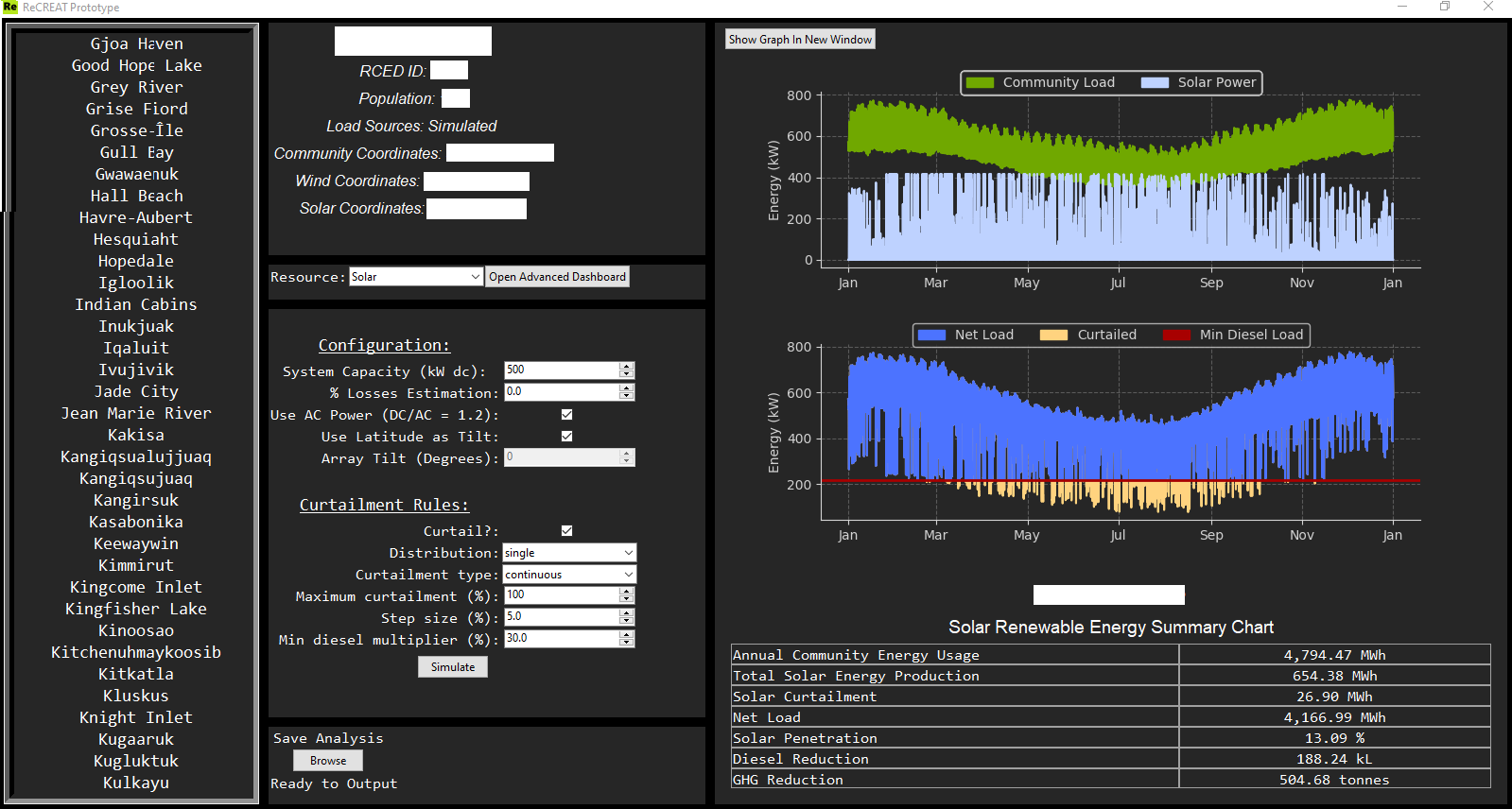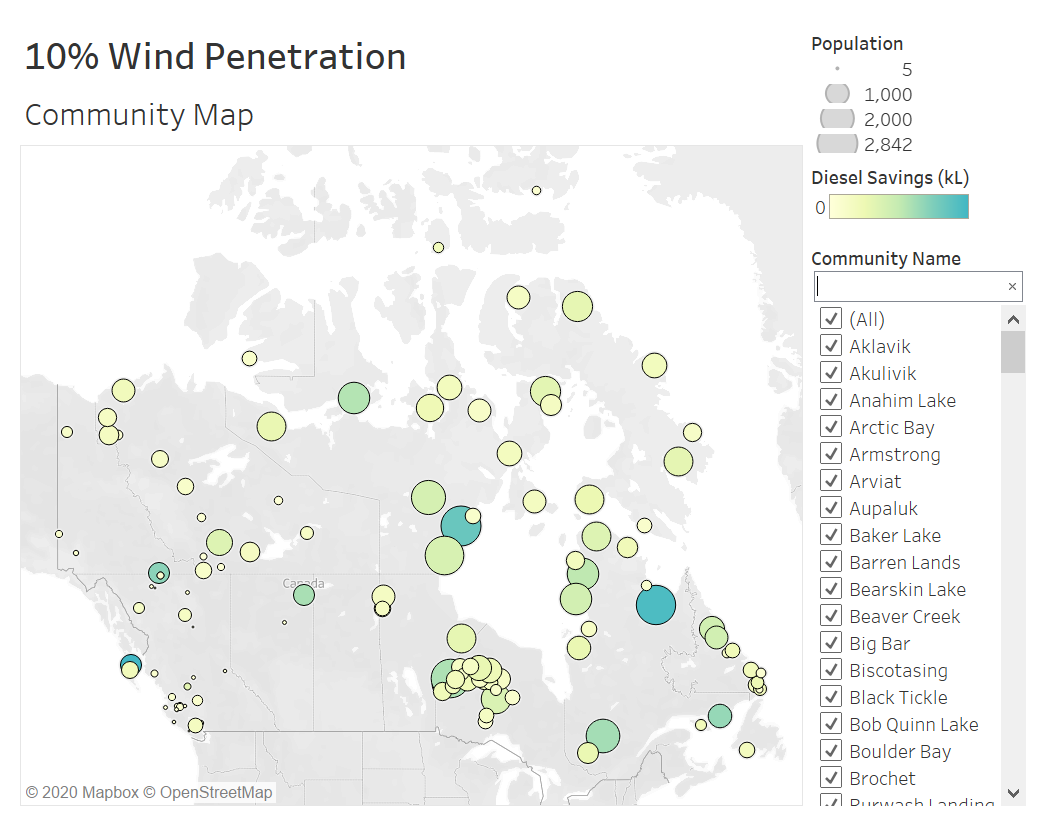Renewable energy for the North
Project location: Across Canada
Project lead: CanmetENERGY Ottawa
Timeline: 4 years (2019 to 2023)
Program: Northern and Remote Energy
Project description
This project aims to provide an objective technical analysis of renewable energy opportunities for remote and isolated off-grid communities in Canada. The outcomes are intended to support communities and policymakers in evaluating the potential for wind and/or solar photovoltaic (PV) to reduce diesel fuel consumption in these communities. Our team is analyzing the renewable energy potential for nearly 200 Canadian remote communities, developing community load profiles, and assessing the potential for diesel reduction and greenhouse gas (GHG) emissions reductions.
The team is developing a rapid analysis tool that is pre-populated with community-specific data, which includes hourly load profiles, and site-specific modeled wind and solar data. In addition to modeled diesel reduction values, results also include renewable energy penetration, production, and “curtailed energy” (lost energy).

Figure 1: Snapshot of tool output for modeled solar analysis for a single community, including graphical results and summary of high-level results.
Text version
A snapshot of the rapid analysis tool being developed by CanmetENERGY Ottawa. Moving from left to right, the tool’s interface includes a list of Canadian remote, off-grid communities; a pre-populated dataset including community population and co-ordinates, locations for wind and solar resource data, as well as other energy system configuration options; and the results of the simulation, including graphs and a summary chart of measures such as total renewable energy usage, net load, diesel reduction, and GHG reduction.

Figure 2: Aggregated analysis output indicating diesel reduction potential across multiple communities under a 10% wind energy penetration scenario.
Text version
The map demonstrates the results of an analysis of diesel reduction potential in multiple remote communities across Canada, in a scenario where wind energy accounted for 10% of each community’s energy load. The amount of diesel savings is indicated by the colour of the circle; with yellow representing lower diesel savings, green representing medium diesel savings, and blue representing higher diesel savings. Diesel savings are measured in kilolitres. The size of each circle represents the size of the community proportionate to the scale in the top right.
Contact CanmetENERGY in Ottawa
To learn more about this project, email our Business Office.
Page details
- Date modified: